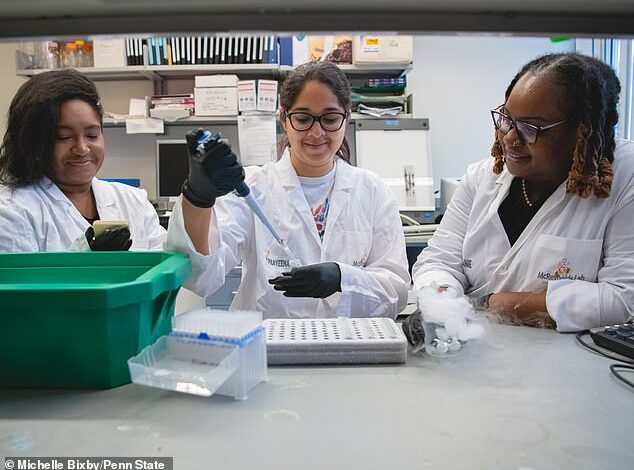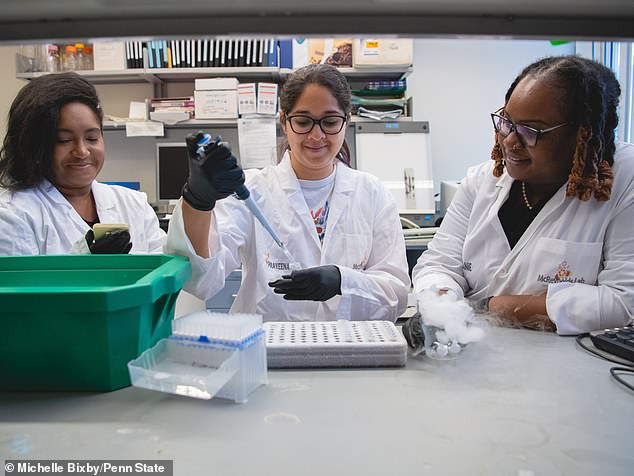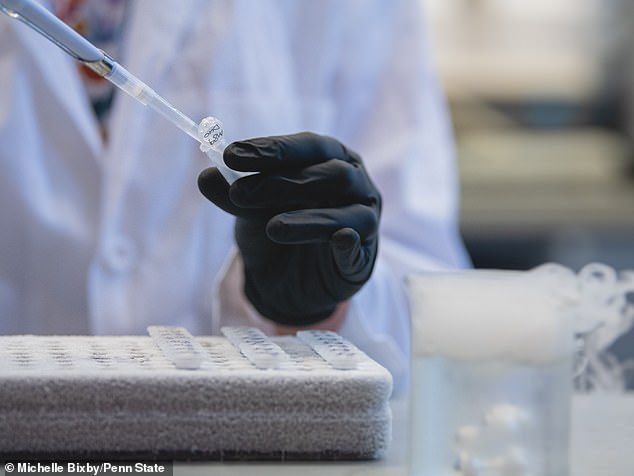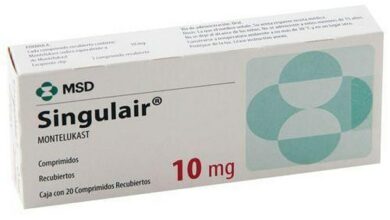Cancer drug could ‘REVERSE’ Alzheimer’s before it takes effect, study suggests: ‘Could impact families, society and economy’




The key to stopping Alzheimer’s before it progresses could lie in a drug that doctors already use to treat another disease, groundbreaking new research suggests.
Researchers from Penn State and Stanford used a type of cancer drug to repair one of the first systems to break down in dementia: the brain’s energy use.
The drugs, which restored sugar levels transported to nerve cells, revitalized the brains of mice treated with the therapy, protected their memories and potentially reversed dementia.
According to the study authors, this is the first treatment of its kind that promises to address the causes of Alzheimer’s, rather than just treating the symptoms of the disease.

Penn State researchers (pictured) focused on a whole new theory about how Alzheimer’s can develop: from treating the symptoms of the disease to treating the cause.

Early in Alzheimer’s disease, cells that supply energy to neurons stop working as efficiently as they would in a normal brain. The researchers focused on this breakdown
This could have implications for the nearly 7 million Americans currently living with Alzheimer’s disease.
By 2050, the Alzheimer Association predicts that number will rise to 13 million, costing Americans nearly $1 trillion annually.
Dr. Melanie McReynolds, co-author of the paper and the Dorothy Foehr Huck and J. Lloyd Huck Early Career Chair in Biochemistry and Molecular Biology at Penn State, said, “In the broader context of aging, neurological decline is one of the major cofactors preventing us from aging more healthily.”
The benefits of understanding and treating metabolic decline in neurological disorders impact not only those diagnosed, but also our families, our society, and our entire economy.’
The drugs currently used to treat this disease target the removal of proteins in the brain called beta-amyloid plaques.
However, more and more neuroscientists suspect that these plaques are not the cause of dementia, but a symptom of the disease.
So treating these plaques is like giving Advil to someone with a cold. It may take away some of their discomfort, but it won’t get the bacteria out of their system.
Instead, this treatment aims to stop Alzheimer’s before symptoms — including memory loss, confusion and language loss — even begin.
One of the many things that happens early in the Alzheimer’s disease process at the molecular level is that neurons no longer get as much sugar or energy as they need.
According to Dr. Paras Minhas, an attending physician at Memorial Sloan Kettering Cancer Center, this makes them weaker and sicker.
The researchers saw this loss of energy as a possible cause of Alzheimer’s disease. In their paper, published in published in the journal Sciencethey focused on an enzyme called indoleamine-2,3-dioxygenase (IDO1), which they thought might be responsible for this breakdown.
They used a type of drug called IDO1 inhibitors, which make the enzyme work less well and prevent sugar from flowing to the neurons.
This is the same type of drug that is being developed to treat skin, breast and blood cancers. There are not many of these drugs in use at the moment.
One of these, called Verzenio, is used for breast cancer and costs about $15,000 per month without insurance. It is taken in pill form.
The researchers used this type of therapy on mice and on cells they grew in the lab that showed signs of Alzheimer’s. In both cases, the cancer drugs helped keep the cells in the brain that feed neurons healthy, so they could keep pumping out energy for neurons to use.
This stopped the formation of the disease’s hallmark features, beta-amyloid plaques, said Praveena Prasad, a doctoral student at Penn State who contributed to the study.

The researchers tested this therapy on mice and on cells they had grown in the lab. The next steps will involve testing the theory on more animals and eventually on humans.
“We show that by targeting brain metabolism, we can not only slow the progression of this disease, but we can also reverse it,” she said.
Research into dementia is partly so difficult because scientists have not yet determined what causes it.
The researchers don’t claim that brain cell energy loss is the sole cause of Alzheimer’s, but it is a new theory that could help them unravel the whole mystery.
And that’s in a drug that we’ve already developed, said Dr. Katrin Andreasson, lead author of the Stanford University School of Medicine.
Dr Andreasson said: ‘Inhibiting this enzyme, particularly with compounds previously investigated in human cancer clinical trials, could be a major step forward in finding ways to protect our brains from the damage caused by ageing and neurodegeneration.’
Still, they’ll need to test it in more complex animal models, and eventually in humans, before it proves useful on a large scale. The drugs could still fail at any point in that process
And even if it passes the next rounds of testing, it will be years before it becomes a widely available treatment for dementia.
Some studies have indicated that on average 7.5 years for a drug to make it through clinical trials in the U.S. But since some types of IPO1 drugs have already been proven safe for humans, it likely won’t be long before that happens.




